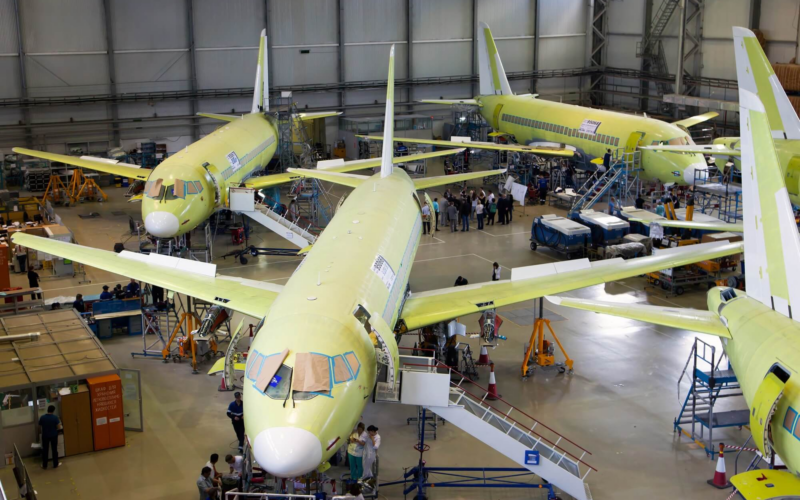Russian Transport Minister Vitaly Savelyev heavily criticized a number of Russian-made commercial aircraft, including the Sukhoi SSJ100, the Ilyushin Il-96 and the Tupolev Tu-204, calling into question the future of some of these aircraft.
In a monologue, Savelyev said that the three jets are commercially ineffective, and that inability to procure Western-made parts may have a large impact on the operations of the SSJ100, currently Russia’s main aircraft for international flights.
The monologue came as an answer to criticism expressed by a senator of Russia’s Federal Council Ivan Abramov, during a Committee on Economic Policy of the Russian Federation Council meeting. While the meeting was broadcasted live, Savelyev’s critical remarks were not included in the recordings of the meeting distributed by Russian media.
In the meeting, Abramov said that a lot of hope has been placed in, and a lot of money had been allocated to Russian domestic aircraft production programs. However, the programs had stalled.
Savelyev responded that neither the Ministry of Transport nor Russian airlines are responsible for the problems with domestic aircraft manufacturing, and the question should be directed at the Russian Ministry of Industry and Trade (Minpromtorg), which did not procure the aircraft in time and did not ensure against the presence of foreign-made components.
“Yes, Sukhoi Superjet is not a very effective airplane from the point of view of commerce. But how many Sukhois does Aeroflot have? Seventy-six. And how many did Aeroflot order? One hundred and fifty. And when did we order them? One hundred of them – back in 2018, in Vladivostok, together with the President Putin. Tell me, where are the rest of the aircraft?” Savelyev said.
“What is the main problem of the Sukhoi Superjet? We are flying 148 Sukhois, we took them and started flying everywhere. But the part of imported components in them is huge. And their engines are made by Snecma. What happens if they malfunction? How do we change them? Yes, we have the PD-8 [engine – AeroTime], it was developed by Minpromtorg, great. But it is going to enter service only in 2023, and I can’t rush them, because of safety. That’s why this question has to be directed to Minpromtorg,” Savelyev added.
The SSJ100, also known as Sukhoi Superjet 100, remains the only Russian commercial aircraft to be produced in large quantities. However, its deliveries have deviated from the original plans. In addition, a number of programs aiming to reduce the part of Western-made components in the aircraft failed to have the impact the Russian government had hoped for. For example, the SSJ New variant, which was intended to reduce the number of such parts, still has almost 50% of its components manufactured outside of Russia.
Savelyev also criticized other domestic aircraft programs, particularly the wide-body Ilyushin Il-96 and the narrow-body Tu-204.
“The Il-96. Yes, it is not competitive. Aeroflot had six of them, they had been flying for over 20 years, we said goodbye to them. They were not competitive, just like the Tupolev Tu-204. They were flying, they were being manufactured, but they consumed lots of fuel. The cost of fuel constitutes 33% of the ticked price, so the price of their tickets goes through the roof,” Savelyev said.
However, the manufacturing of these aircraft will continue, according to Savelyev. Previously, Russia’s Deputy Prime Minister Yury Borisov said that the government was looking into ramping up the production of both the Il-96 and the Tu-204 (as a modernized Tu-214).
“Now, under my protection, we are going to take five aircraft: two Il-96 freighters and three Il-86s. They will be finished, they have been staying unfinished at the plant in Voronezh. And we will fly them,” Savelyev said.
Production of both the Tu-214 and the Il-96 has been slow, with only several aircraft manufactured every few years. In 2015, a new version of the Il-96, the Il-96-400M, was announced. However, it was cancelled in 2021.

